
Featured Blog | This community-written post highlights the best of what the game industry has to offer. Read more like it on the Game Developer Blogs.
A complete and final look at a full year of sales for an indie game called the Oil Blue.

It was just one year ago that I started selling my first major commercial indie game, the Oil Blue, on my own website and GamersGate. Since then I’ve written two articles (Part 1) (Part 2) detailing my experiences and sales in the hopes of helping fellow indie game designers understand the challenges facing us, with the intention of my last article six months ago being the final “conclusion” of my written experiences.
However, enough interesting things happened between now and then that I’d like to share once more with you all, including the first sale on the Oil Blue and being published in the book, “250 Indie Games You Must Play,” as well as going back to detail a few areas such as finding out when my game was first pirated thanks to YouTube. I’m also going to share my sales including distribution sites outside my own website for the first time, giving you the complete total of sales to date.
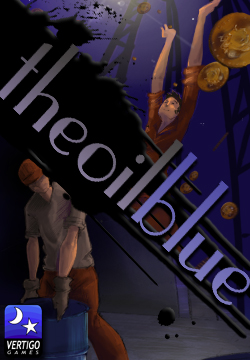
Where We Left Off
If you haven’t read my previous articles on my game sales (Part 1) (Part 2) please do so before diving into this one so you can get a sense of where I’m coming from, the goals I had for the game, and so on.
We left off with the game coming out of a “holiday hibernation” where sales had largely frozen over thanks to the Christmas season, and I had no idea if game sales would kick back into action or I had seen the final plateau of sales in December. At that time my goal was to start a new project, get far enough along to officially announce the new project and kick off a sale on the Oil Blue at the same time to gain more publicity.
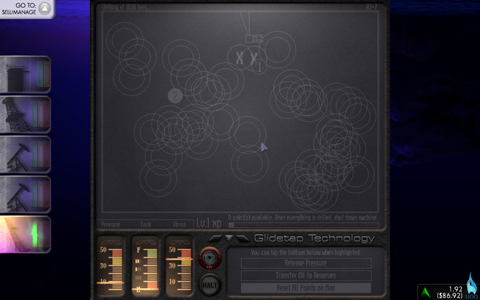
Sales for January 2011-June 2011
It seemed at first that my fears of not being able to “shake off” the dip in sales for the holidays might have been unfounded, as the game sold about $280 in the month of January, a much better figure than the $40 I had made in the whole month of December. But then sales dipped to sub $100 in February and finally $40 in March. It seemed the Oil Blue had finished its sales run.
During this time I had planned to unveil my next game, which was going to be a game set in the justice system of the USA. The more I had planned it, the more I realized how much time I was going to need to put into the game, not to mention how expensive it was going to be, leaving the project going nowhere fast. I was getting aggravated at myself for trying to get involved in yet another year long project with little return, and I was slowly getting depressed. Meanwhile, I knew I wanted to drop the price of the Oil Blue in conjunction with announcing my latest game, simply because my audience was limited and I wanted to leverage as much publicity as possible. But nothing was coming together for the latest project.
Then, I received an email from Mike Rose. He was putting a book together called “250 Indie Games You Must Play” and asked if I would allow the Oil Blue to be a part of it, and I was ecstatic. Not only was it a great honor to be a part of something like this, but it would allow me to finally have an excuse to drop the price of the Oil Blue and sell some copies with the added attention it would get from the book. It paid off nicely, with the sales adding another $600 in sales up to June. But that’s not the most interesting part.
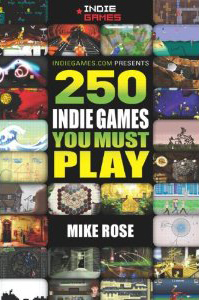
Everyone Loves Bundles
The Oil Blue dropped from $14.95 to $8.95 on April 16th, with the intention of running to June 31st. However I also have a few bundles of games on my site that include all of my games at a cheaper price, with three bundles in all (see Part 2). I went ahead and slashed the prices on the bundles as well, from $25 to $15 for my five game bundle pack and 25-40% off the other two bundles.
When the Oil Blue went on sale with its new price, the change was minimal: I sold a paltry amount of new copies on both my site and GamersGate, which was quite surprising to me. But what was even more surprising was the influx of purchases for the five game combo pack, bringing up sales from $100 to $600. It was in a sense like I was selling the Oil Blue back at $15 all over again. In that regard, the sale was a nice success in bringing a little extra revenue for a game that hasn’t done much in the first part of the year.
Piracy and Youtube
Back when the game was first launching, I had submitted a trailer to GameTrailers and went ahead and uploaded it to my YouTube account as well, since it’s very easy to embed on other sites. That main YouTube trailer was the one I linked to when posting the game on various forums, websites, and so on. But what was really helpful was the new traffic indicator that YouTube has for all their videos now, which tells you which websites embed your trailer, how much traffic you get from each one, etc. Here’s an example from one of my YouTube vids of a crazy Burnout 3 crash:
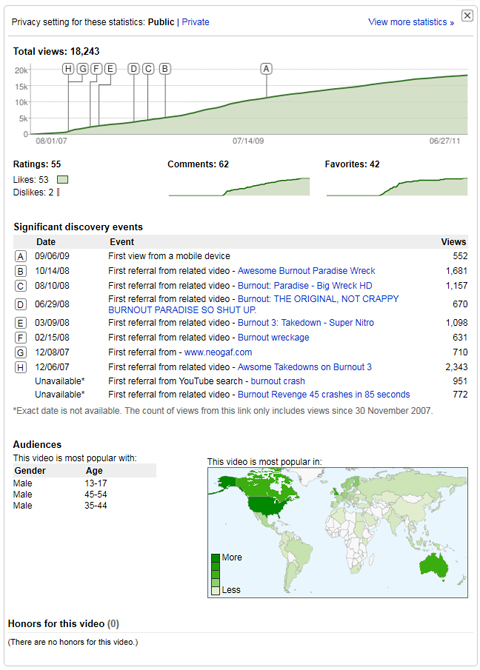
About a week after launch, my Oil Blue trailer view count spiked to over 10,000…but I couldn’t see any discernable difference in sales. So I loaded up the traffic page and, to my horror, found four different piracy forums linking to the trailer, all with up to five links apiece to download my game on Rapidshare and other sites of that nature.
The first thing I did was make my traffic page for the trailer private, so that no one else could see the piracy links. The next thing was to go to each of those forums and try to shut down the download links at the source by emailing them. Rapidshare, Megaupload and some other sites took down the links within the day. Other less known download sites had incredibly difficult hoops to jump through- going as far as having to fax over a copy of a legal document of copyright ownership, and waiting a few weeks to be approved. The idea of going through all that trouble only to have another link posted within a few hours seemed ludicrous to me, and frustrating as hell. I took down most of the links, but there was only so much I was going to be able to do anyways.
Still, YouTube’s traffic page helped immensely in knocking a few holes into the pirate ships, and it’s something I’ll be using to my advantage in the next game I release.
Experiments with Payment Solutions
Because the Oil Blue was slowing down on sales, I wanted to try out some different ways of selling the game, not necessarily to help sell more copies of the Oil Blue, but to see what would work best for my next game. A few of those included:
Because traffic to my website is down to a slow burn due to no new releases/news on new releases in months, it was hard to try out this new model of distribution with TrialPay, which allows a user to choose offers from different companies (such as Netfix), complete them, and receive the Oil Blue for free in return. The model they have implemented is very solid, and I had a few people take advantage of the offer, but not enough for me to offer it as a permanent payment solution.
Still, I have some good ideas on how to leverage TrialPay on my next game. Perhaps I could offer it as a “preorder” incentive and then discontinue it once the game is released. But I do want to point out that they’re a nice group of people over there that I would recommend to any indie game developer wanting to experiment with payment solutions.

-Publisher
I’ve been contacted by a few portals and a publisher asking about taking the Oil Blue to their sites, which I agreed to. I’ve yet to hear back from them six months later, despite having my game on their services. The publisher even raised the price to $20 on their site, though it doesn’t seem like they’re offering the game beyond their website.
What I’ve basically learned from this is to probably never accept offers from people emailing you about putting your game on their services. I don’t think they’re necessarily sitting on a pile of money and not sharing the dough (I would be very surprised if they sold any copies at all, since some of those were startup portals in the vein of Steam).
I’m thankful to have done business with them however, so that I know never to do business with them again.
GGotD is a good site for some quick cash and visitor hits, no question. I don’t think it’s wise to put a new game on their service, but for older games that aren’t bringing in cash flow, it’s a great way to grab some traffic and compensation. They also allow your ads on their game page for the day your game is given away, which led to a few extra sales of the Oil Blue when I ran some older games on their service last year. While payment can be a bit erratic (I’ve always had to email them at least once to remind them of payment due), I’ve never not been paid, and plan to do business with them later this year.
While I’ve done business with GG in the past and the Oil Blue was on their website just a week after release, I just wanted to take the opportunity to praise their services. I cannot recommend them enough for all indie devs ready to jump into the commercial space. They have monthly invoice statements sent to me on a good schedule, something that I’m learning is quite rare for most companies to do faithfully. I’ve never had any problems with payment or issues, and they’re quick to respond to my emails. They’re the best portal on the internet for indie devs, no question. Of course, I can’t speak for Steam because they’ve rejected my game, but hey.
The Final Sales Tally
So, after one year of sales, where do I stand? Well, including all sales outside of my website (which I haven’t shared before until now) and bundles, I’ve made $4,480.87. On a budget of about $800, that’s not too shabby at all. But I have to ask myself: given the time I put in to make that money, was it worth it?
For making a living off of, no, it wouldn’t be worth it. But for the experience and joy of making a game, and as supplemental income to my current real job as a barista, yeah, I think it definitely was worth it. I didn’t get to $10,000 as my own personal goal, but I think I can get there with my next game.
My experience with the Oil Blue has changed my plans for the next game I’m currently making. This time around, I’m giving my artist and composer freelancers royalties in the next game as well as up front compensation, so that they feel they have more invested in the project than they did before. I also don’t plan on hitting the $14.95 price point with this next game, but want to take it around $8.95-12.95, which better serves the audience I have now. I’m also kicking off previewing the game at an earlier state than before, with the first information of my new game being posted on my blog on June 29th (below is the teaser image we released last week).
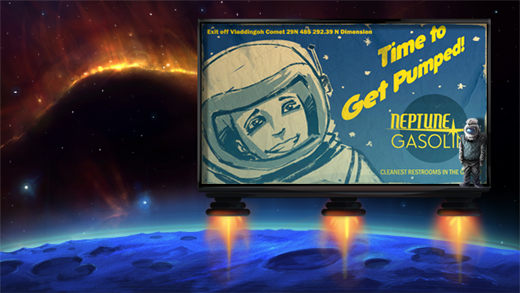
But what I really hope is that these series of articles have helped someone out there planning their next indie game, and the hurdles they’ll be facing both financially and commercially. I wish yall good luck in your endeavors, and I’ll be back a month after my next game releases to tell you all about my sales experiences once more. Thanks and good luck out there!
---
-Follow me on Twitter and check out the Vertigo Games Blog for information on our next game!
Read more about:
Featured BlogsAbout the Author(s)
You May Also Like








